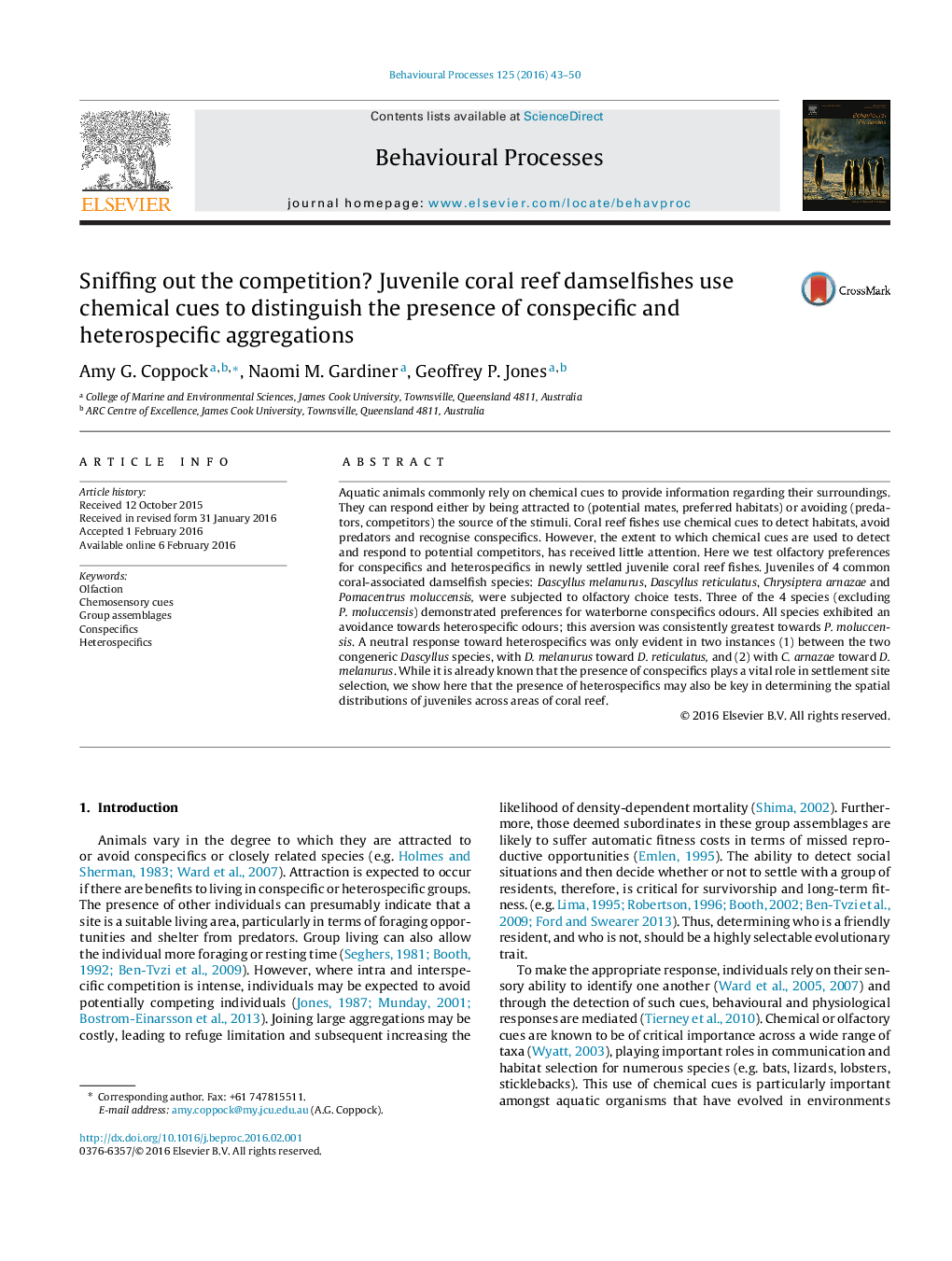| کد مقاله | کد نشریه | سال انتشار | مقاله انگلیسی | نسخه تمام متن |
|---|---|---|---|---|
| 2426399 | 1553155 | 2016 | 8 صفحه PDF | دانلود رایگان |

• Species assemblages and depth preferences were noted for 4 common coral reef damselfish.
• Juvenile fish subjected to pairwise olfactory choice tests.
• Chemical cues tested were conspecific and heterospecific.
• Three of the four species demonstrated a preference toward conspecific cues.
• Responses toward heterospecific cues were neutral or negative.
• All olfactory cues derived from P. moluccensis elicited an avoidance response.
Aquatic animals commonly rely on chemical cues to provide information regarding their surroundings. They can respond either by being attracted to (potential mates, preferred habitats) or avoiding (predators, competitors) the source of the stimuli. Coral reef fishes use chemical cues to detect habitats, avoid predators and recognise conspecifics. However, the extent to which chemical cues are used to detect and respond to potential competitors, has received little attention. Here we test olfactory preferences for conspecifics and heterospecifics in newly settled juvenile coral reef fishes. Juveniles of 4 common coral-associated damselfish species: Dascyllus melanurus, Dascyllus reticulatus, Chrysiptera arnazae and Pomacentrus moluccensis, were subjected to olfactory choice tests. Three of the 4 species (excluding P. moluccensis) demonstrated preferences for waterborne conspecifics odours. All species exhibited an avoidance towards heterospecific odours; this aversion was consistently greatest towards P. moluccensis. A neutral response toward heterospecifics was only evident in two instances (1) between the two congeneric Dascyllus species, with D. melanurus toward D. reticulatus, and (2) with C. arnazae toward D. melanurus. While it is already known that the presence of conspecifics plays a vital role in settlement site selection, we show here that the presence of heterospecifics may also be key in determining the spatial distributions of juveniles across areas of coral reef.
Journal: Behavioural Processes - Volume 125, April 2016, Pages 43–50